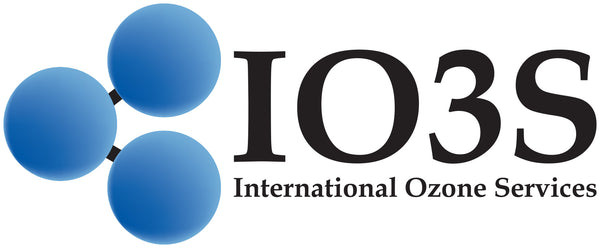This article will cover different methods of applying ozone to a filtration system. The effectiveness of ozone is dependent on the amount of ozone and the period of contact time, usually expressed as mg/L x CT. An example is 1mg/L for 2 minutes of contact time.
One of the most common ways to add ozone to a system is through diffusers, such as ultra-fine poor ceramic diffusers, glass-bonded silica diffusers, or other types. This method is inexpensive, but it can be one of the least effective ways to add ozone to a system since the gas is no longer pressurized once it leaves the diffuser. It also presents a health hazard and additional wear and tear on the building since ozone is highly caustic. Inhalation of ozone gas can cause irritation to the lungs and throat, exacerbate conditions such as asthma and COPD, and cause death in high enough doses. Ozone released into the atmosphere can also cause long-term damage to anyone in contact with it.
Ozone can be injected directly into the system piping. One of the biggest challenges with this method is that there isn’t always enough piping run to ensure that the ozone is depleted prior to entering the exhibit or water body which can lead to environmental exposure to ozone gas. With this option, there is not usually an off gassing valve which can also create an air lock if the gas accumulates in a the pipe. Even more concerning is the contact of ozone gas directly with the piping. Depending on the type of piping, this gas exposure can cause material degradation. While this is an inexpensive option, it is not the most ideal.
Another common way to apply ozone is through a venturi with a pressurized contact tank. A venturi is a short tube with a tapering constriction in the center that causes an increase in the velocity of the flow of water and a corresponding decrease in pressure, which is used to create suction. The ozone source is attached to the suction fitting while the filtered water passes through. Once the ozone is injected into the piping, the water enters a pressurized tank where it mixes for the allotted contact time. The contact vessel would be at least a thousand gallons per minute for a filtered flow rate of 500 gallons per minute. These pressurized tanks are fitted with an off-gassing valve, which removes the leftover gas from the system. Those off-gassing valves are plumbed to an ozone destruct to avoid sending ozone gas into the atmosphere.

Commercial protein skimmers use a venturi to introduce air and ozone. This is done to encourage more efficient microflocculation. However, this only happens when deficient ozone levels are used (0.01mg/L). This dosage is not concentrated enough to disinfect. In rare cases, some users have turned their protein skimmers into contact tanks for disinfection, which is not the most efficient.

Lastly, a venturi with a Speece cone can introduce ozone into the cone vessel. Speece cones are built based on a design developed by Dr Richard Speece from Vanderbilt University. The inverted cone allows the velocity of water to reduce while the undissolved gas rises. As the water travels downward, it shares the gas bubble, which suspends the ozone. Since the entire reaction is under pressure, supersaturation can occur, reducing the contact time. These systems also do not require an off-gassing valve or ozone gas destruction, as the entire volume of gas is dissolved into a solution. Speece cones are more commonly used for introducing oxygen but can also be used for ozone.

